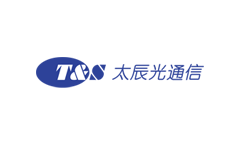How to Achieve Precise Connection of Optical Fibers with Fiber Connectors?

When two optical fibers are connected, due to the difference in position, shape, and structure of the two optical fibers, the energy cannot pass 100% from one optical fiber to the other optical fiber, that is, connection loss occurs. To minimize connection losses, the two optical fibers must be precisely aligned. A fiber optic connector is used to quickly connect two optical fibers so that optical signals can be continued to form an optical path.
So how does the fiber optic connector achieve the precise connection of optical fibers?
There are many fiber connector types, but the precise alignment between fibers depends on two factors. One is the ceramic insert with a precise inner diameter, outer diameter, and concentricity, and the other is the ceramic sleeve with a slit, which is a very clever design.
Ⅰ. Physical contact of the end face of fiber connectors
Precise
alignment, however, is not enough for fiber optic connections. We know
that light bounces back and forth at the interface between two different
media. The refractive index of quartz fiber at 1.55μm is about 1.455,
so the reflection BR of the fiber end face is 3.4%. The backward
reflected light affects the stability of the communication system, and
each quartz glass-air interface introduces an insertion loss of about
0.15dB. Therefore, each fiber connector will increase the loss by 0.3dB.
To ensure physical contact between fibers, the core surface is usually ground into a sphere, and the fiber ends are located at the apex of the sphere. This is the second clever design in fiber connectors. Because the physical contact depends on the deformation of the end face, and ceramic is both wear-resistant and elastic, it was chosen as the core material rather than glass.
Ⅱ. Fiber connectors further reduce reflection echo
Physical
contact between optical fibers can ensure a low loss of fiber connection
point, but the echo loss RL can only reach 55dB. For some applications
with higher RL requirements, the end face of fiber optic connectors is
ground at a certain angle known as the bevel physical contact APC.
A fiber connector is the most basic optical passive device in a fiber communication system. The most basic technical requirements of the system for fiber optic connectors include low insertion loss IL and high return loss RL, that is, the lowest reflection echo BR. However, as the most widely used optical passive devices, their cost and connection convenience are just as important as the technical specifications.
As a fiber optical accessories supplier, T&S Communication today takes a leading role in OEM and ODM service for optical fiber termination solutions. Based on T&S Communication’s excellent comprehensive capabilities, T&S is dedicated to bringing fiber optical components with superior performance to next-generation communications in a green, pragmatic, and cost-effective manner. Please feel free to contact us if you have any interest in related products.
- +1 Like
- Add to Favorites
Recommend
- Classification and Typical Application of Fiber Optic Connectors
- Introduction to Fiber Optic Connectors
- What Are the Common Fiber Optic Attenuators?
- PLC Optical Splitter vs FBT Optical Splitter: What‘s the Difference?
- The Working Principle and Production of Fiber Optic Attenuator
- Optical Power Meters: Understand Their Uses and Internals
- II-VI Incorporated Introduces Optical Monitoring System for Optical Transport and Access Networks
- What is Passive Optical Network (PON) ?
This document is provided by Sekorm Platform for VIP exclusive service. The copyright is owned by Sekorm. Without authorization, any medias, websites or individual are not allowed to reprint. When authorizing the reprint, the link of www.sekorm.com must be indicated.





























































































































































































































































































































































































































































































































































































































































































































































































































































































